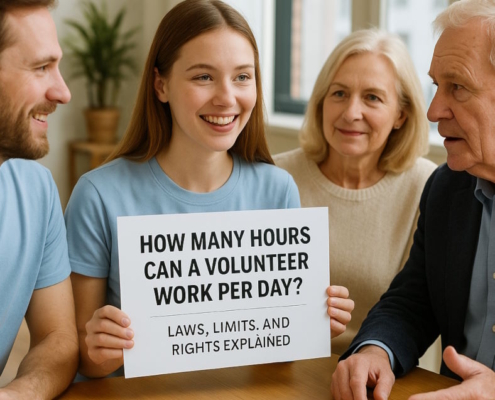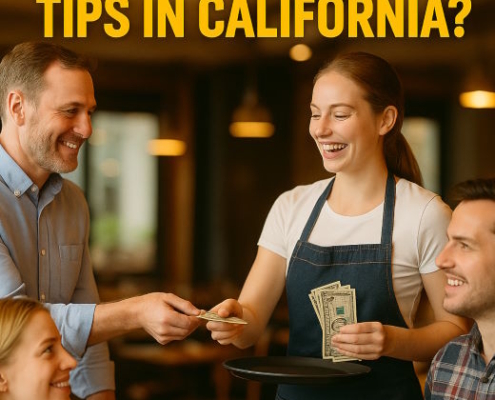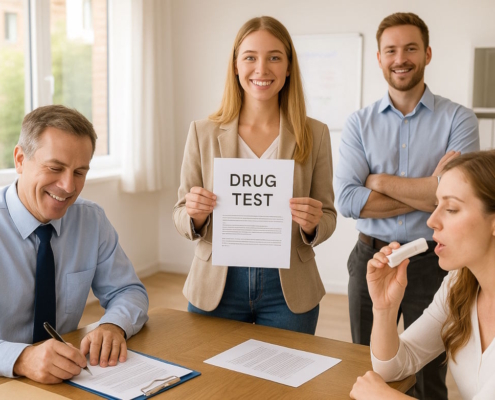What Does HR Do?
Human resources department’s HR function include planning, coordinating, and directing the administrative function of a company and its workers.
By Douglas Wade, Attorney
Email | Call (800) 484-4610
HR Responsibilities
What does HR do? HR responsibilities include recruitment, development and learning, performance management, and more. But we can comfortably say that Human Resources Management has twelve main functions. To understand these specific functions, we must first review what Human Resource Management, or HRM, really is.
HRM may be described as a particular method of employment management that aims, through the use an integrated mix of structural, cultural, and personnel strategies, to create a highly capable and committed workforce that can achieve competitive advantage.
This article will review the twelve main HR functions and detail how they can help promote and advance a company. In brief, these functions include the following:
- Human resource planning
- Performance management
- Recruiting and selecting
- Career planning
- Development and learning
- Rewards
- Function evaluation
- Industrial relations
- Health and safety
- Employee communication and participation
- Administrative responsibilities
- Personal wellbeing
So, let’s get to it!
In this article, attorney for HR department discusses what HR do by describing HR functions as follows:
-
HR Planning
The first function of HR involves knowing what the company will need in the future. That is to say, what sort of people will the company require, and how many of them? Making this estimation will help shape selection, recruitment, development and learning, performance management, as well as other Human Resource functions.
In short, human resource planning may be defined as a constant process driven by data that ensures a company has the best individuals in the correct roles at the appropriate time so that it can achieve all its business goals.
-
Talent Recruitment and Selection
The second function of HR has to do with attracting the right individuals to work for the company and choosing the top candidates from a slew of applicants.
Attracting qualified candidates usually begins with advertising an employer brand. Companies that boast top-notch employer brands actually get fifty percent more qualified candidates. It is clear that being a popular company has a plethora of benefits, just as being a tainted employer can drive away prospective employees. When it comes to the latter, consider the cigarette industry, which has a hard time bringing in talented employees because of its problematic reputation.
When a company has a positive brand reputation and the proper methods of sourcing employees, the job is halfway done. Once applicants write in, HR will use the selection process to choose the highest-potential and best-qualified individuals. It is critical that HR establishes an solid recruitment process, because failed hires can lead to significant drops in productivity – an almost 40% plunge, in fact.
In recent years there have been many technological advances in the recruitment field, meaning that there are plenty of recruitment tools for every part of the recruitment pipeline.
-
Employee Performance Management
Performance management plays a major role in keeping workers engaged and productive in their positions at a company. Successful performance management involves setting clear goals, showing strong leadership, and encouraging honest feedback.
The current standard is biannual or annual performance reviews for each employee, during which he or she is given reviews by a supervisor. That said, almost 70% of HR professionals hold that soon, performance management will involve frequent organic conversations between superiors and subordinates.
An increasingly popular performance management tool is 360-degree feedback. This kind of interaction involves managers, peers, subordinates, and even customers reviewing an employee’s performance. This manner of performance management can be useful in identifying areas of possible betterment.
Performance management can also help workers develop skills and abilities that will help a company take positive steps forward, improving production and overall competence.
-
Training and Development
Another major responsibility of HR is enabling workers to learn the skills they require for the future. In fact, training employees is connected to the first HR function we discussed (human resource planning), where HR creates the bridge that links today’s workforce to the one required down the road.
Companies traditionally establish a budget for development and learning. The money set aside is then divided among employees. Such spending is required in certain countries. In the UK, for example, businesses with a yearly pay bill of over three million pounds pay an enforced rate of half a percent devoted to the professional development and education of their workers.
Other countries, such as Belgium and Holland, require employers to care for their employees, and this care includes learning and development. But in some countries, such as the United States, employee learning and development is far less regulated.
Regardless of regulatory differences, almost all companies comprehend the importance of investing in the development and education of their workers. The HR department carries the responsibility of guiding these efforts in the proper direction. Further, HR has a role of growing importance in training, or upskilling, managers and company leaders. This, in fact, is a current HR trend in 2023.
-
Career Planning
Another important Human Resources function is career guidance, development, and planning for workers, known collectively as career pathing.
A company can better retain and engage its employees by showing them how their goals can fit within the business’ future. On the company’s side of things, there are the advantages of improved succession planning, a better employer brand, and increased productivity.
-
Function Evaluation
Function evaluation may be viewed as a more technical part of Human Resources. This responsibility involves comparing different aspects of the complete HR system. This may include the availability of employees, their quality, the financial situation, job location, job duties, and how important a position is to a business. Function evaluation is meant to demonstrate that similar roles should be rewarded in similar fashion.
There exist a few different methods of ranking functions internally:
- Ranking method: this method involves relevant experts ranking functions with regard to how much their add to the company overall. Two roles will be assessed side by side, and raters will evaluate which is more important to the company. This assessment is performed with all roles, and according to the outcome, HR makes a ranking.
- Classification method: roles within a company may also be grouped into categories using methods of classification. With this method, a job will be categorized and then listed within its assigned group to produce a ranking. Categories might include experience, education, the degree of unique skills required to perform a job, how in-demand these skills are, etc.
- Points method: With this method, jobs are grouped based on factors the company believes will contribute to success. This system awards points to each group for every position. Categories may include technical knowledge, problem solving, innovative capability, influencing and communication abilities, business knowledge, and other key competencies. What skills are considered valuable will vary according to the company in question.
- Personal method: This method does not evaluate the position itself, rather the person performing the job. In this situation, the employee is rewarded according to his or her competencies and skills.
The purpose of function evaluation is to assist the HR department with ensuring the business is successful both with support and service delivery and at a strategic level. Thus, the business can operate strategically while also delivering the required standard of services.
-
Rewards
Another crucial role of HR involves rewarding workers for their contributions. Benefits and compensation are a key part in attracting quality candidates for a role within the company. Pay, as well as perks, will vary depending on the industry, the country, and even the culture. In certain countries like the United States, health insurance is typically an attractive component of a job offer. But in countries like the U.K., there is already a public health system that supplies most healthcare, so health insurance is not a typical job benefit.
According to the total rewards framework, rewards are much more than imply pay and other financial perks. There are also psychological and relational rewards to consider. Sure, rewards may include salary boosts, but there are also rewards related to career opportunities and growth, status, good work culture, recognition, and a healthy balance between work and personal life. For instance, great coworkers and meaningful work are also valuable to employees. A job’s monetary reward is thus made up of economic rewards and additional supplementary benefits.
The EVP, or Employee Value Proposition, synthesizes these diverse aspects. A company’s EVP is separate from the brand and external image. This is the picture a business reflects to its workers. Rewards, therefore, are much more than simply economic. The following are some total rewards a company may offer:
- Performance-based pay
- Base salary
- Bonuses
- Status
- Social environment
- Job security
- Alternating work
- Growth opportunities
- Autonomy
- Formal and informal growth opportunities
- Feedback
Three-quarters of companies anticipate compensation to soon become a more challenging matter, and a little over half of those surveyed are confident with regard to their total rewards offerings. Human Resources and their Compensation and Benefits team are therefore responsible with designing an attractive total rewards strategy that works for both the business and its employees.
Indeed, Functions 1 through 7 fall under the umbrella of talent management. Their purpose is to attract, motivate, develop, and retain excellent employees.
-
Industrial relations
Human Resources is also charged with cultivating and maintaining connections with labor unions as well as other member-run collectives.
In Europe, unionization remains quite common, though it is experiencing an overall decline. Recent research reveals that over 90 percent of Icelandic employees are part of a union, with almost 70% of Danish employees union members. Conversely, in Estonia and the UK, only six percent and about 25% of workers, respectively, were members of unions. Trade union participation in the U.S. is meager, with only ten percent of employees involved.
It is important to maintain good relations with unions to help identify and resolve possible conflicts before they metastasize. This is especially vital in more dire economic times when layoffs are required.
-
Employee communication and participation
One of the most important roles of Human Resources is to act as a credible proponent for employees. Workers should be informed on various topics that concern them, and they should feel both seen and heard. Communication, as a subject, refers to disseminating information that pertains to employees.
One of the primary HR competencies involves being a People Advocate. People Advocacy includes people practices, culture building, and being a communication expert and workplace champion.
-
Health and Safety
Another important Human Resources responsibility is the creation and implementation of health and safety rules and guidelines. One of the main functions of a Human Resources department is making such regulations a part of the organization’s culture.
Let’s consider the example set by Shell, the petrochemical and energy company. It is unacceptable there to walk up or down the stairs and not hold the guardrail, even in the company headquarters. This rule falls under the company’s ‘Goal Zero’, representing the goal of zero workplace accidents. While the regulation is obviously more important and relevant on an oil platform, safety is so enmeshed in the organization’s culture that regulations are applied universally.
The COVID-19 pandemic helped to raise awareness of the importance of workplace health and safety. Over 40 percent of companies report job applicants asking about health and safety protocols. This demonstrates just how important it is for HR to focus on promoting a safe workplace.
-
Employee Well-being
Human Resources is also responsible for supporting the company’s employees so they can perform at the highest level. This care involves encouraging and supporting physical, mental, and financial wellbeing.
HR professionals are also meant to care for employees who face problems when things go awry. Workplace issues, and those beyond the confines of the office, can negatively affect employee engagement, performance, and productivity. This can impact a business’ bottom line. About 80 percent of employees report feeling burned out, and over 50 percent of workers across the globe admit to being concerned about their economic future. It is clear that employee support should be on a major HR focus going forward.
An HR department should put together a holistic strategy that supports face-to-face communication with employees. For instance, a company might offer an assistance program for anyone in need of mental health counseling. On a broader level, the company might stage a mental health awareness day.
-
Administrative Duties
The last function of HR we will discuss is administrative responsibility, which includes both Human Resource Information Systems (HRIS) and personnel procedures.
Personnel procedures concerns the management of relocations, promotions, discipline, illness, performance improvement, racial and cultural diversity, bullying, harassment, and so on.
Human Resources is tasked with developing procedures and policies to efficiently manage employee concerns, requests, and complaints with regard to each of these situations.
Human Resource Information Systems (HRIS) hold data related to employees. HR is in charge of buying, implementing, and operating these systems so the data may be used to make informed decisions.
Summary
Human Resources is a dynamic role that allows businesses to get the best work out of their employees. An HR professional will need to have an expansive skill set that covers all of the above HR functions. The workplace, and society at large, are constantly evolving. HR departments must therefore also change to effectively lead the workforce forward.
Have a quick question? We answered nearly 2000 FAQs.
See all blogs: Business | Corporate | Employment
Most recent blogs:
































